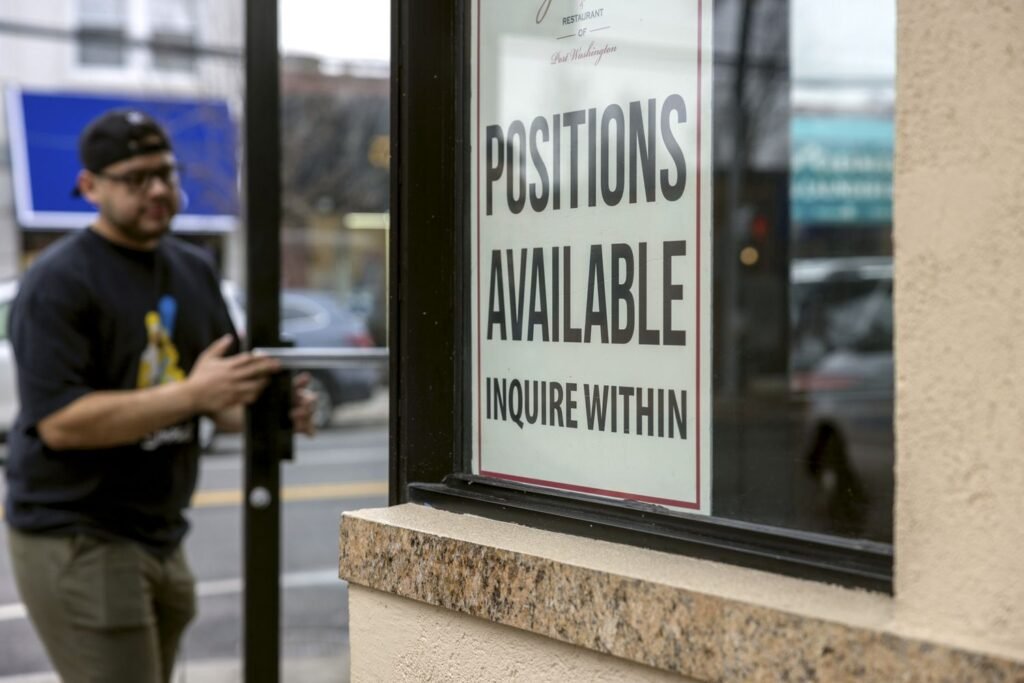:max_bytes(150000):strip_icc():format(jpeg)/GettyImages-2209888657-07eba82054884cf4b6c0ffd4d422fb8c.jpg)
Key Takeaways
- The number of job openings declined in March as the job market continued to cool, according to the Bureau of Labor Statistics.
- Businesses may be growing more reluctant to hire as President Donald Trump’s rapid-fire announcements of tariffs have stoked uncertainty about the future.
- The uncertainty may be helping workers in one way: layoffs have stayed low, as businesses have been reluctant to let go of their existing workforces in case the economic outlook improves.
It got tougher to find a job in March, and that was before President Donald Trump’s “Liberation Day” tariffs shook up the hiring market.
The number of job openings fell to 7.2 million from a downwardly revised 7.5 million in March, the Bureau of Labor Statistics said Tuesday. That was below the 7.5 million jobs forecasters had expected, according to a survey of economists by Dow Jones Newswires and The Wall Street Journal. However, businesses remained reluctant to let their existing staff go, with the number of layoffs falling to 1.6 million from 1.8 million in February.
Tuesday’s report on job openings and labor turnover added detail to the BLS’s jobs report released earlier this month, which showed the overall market expanding at a healthy pace. However, decreasing job openings suggested brewing weakness ahead of President Donald Trump’s April tariff announcements, which soured the job creation outlook in the months ahead.
Trump’s tariffs on trading partners, including a 145% tariff rate against most products from China, could hurt businesses enough to damage a labor market that has stayed resilient through the post-pandemic era. The Trump administration’s federal job cuts, plus the ongoing crackdown on immigration, could also hit the job market in the coming months.
“The disruption caused by the announcement—and a still-elevated tariff rate on most goods from China—is likely to lead some businesses to slam on the hiring brakes,” Cory Stahle, economist for the hiring lab of job hunting site Indeed, wrote in a commentary. “When paired with continued cuts to both federal employment and spending and labor supply challenges that may arise from tighter immigration policy, the risk of more substantive and rapid declines in the coming months is growing.”
The decrease in job openings meant there was one job opening per unemployed worker, the lowest job availability in nearly four years.
Economists said uncertainty about trade policy, stoked by Trump’s frequent import tax announcements, is holding back hiring, although it could also be discouraging businesses from layoffs, at least for the time being.
“The push and pull has left the labor market in a fragile stasis that makes it vulnerable to being knocked off balance should the deteriorating outlook for growth come to fruition,” Sarah House and Nicole Cervi, economists at Wells Fargo Securities, wrote in a commentary.
[publish_date

















